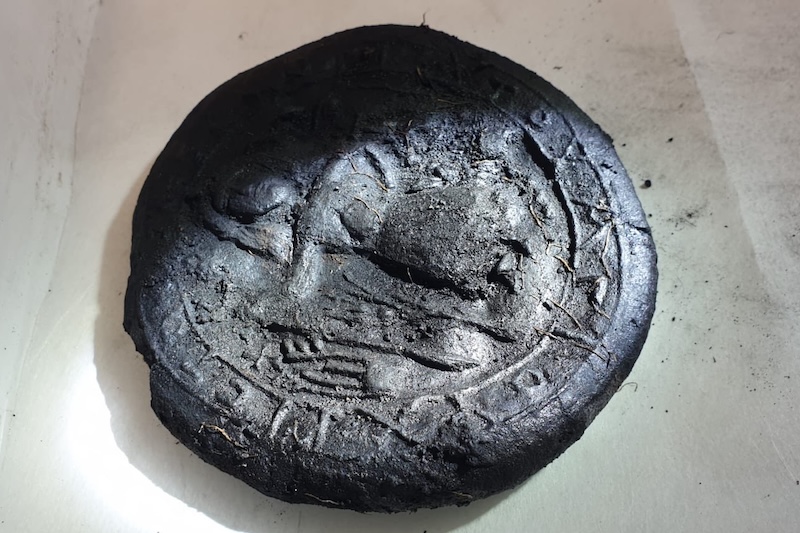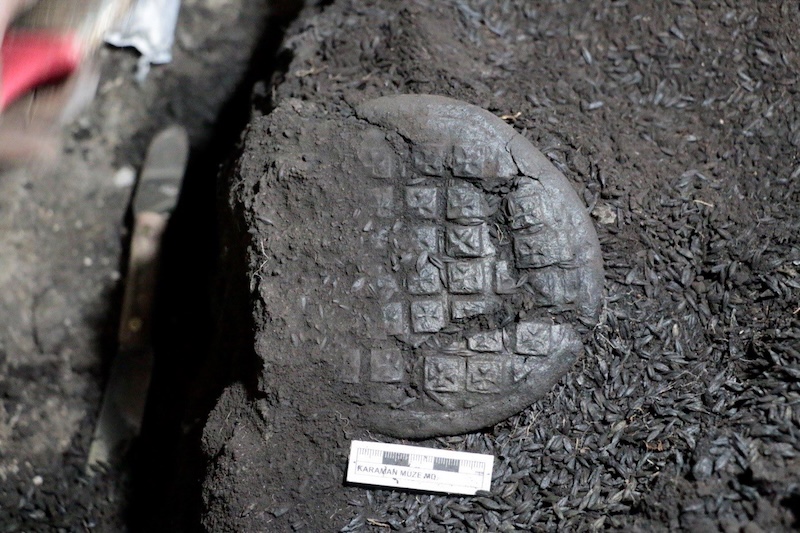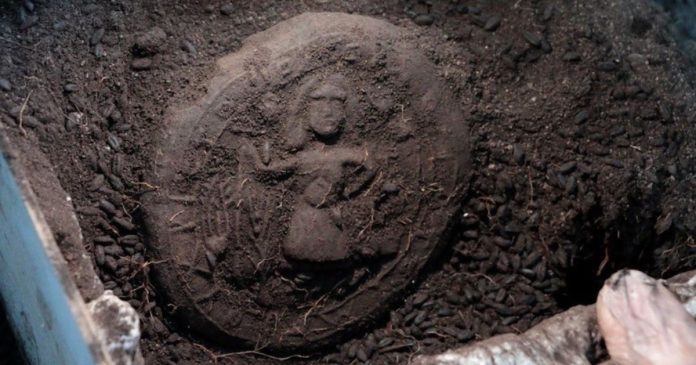Archaeologists working in the ancient site of Topraktepe (ancient Eirenopolis) in Ermenek, Karaman Province (central Anatolia, Türkiye) have uncovered five carbonized breads dating to the 7th–8th century AD. These are among the best preserved charred bread specimens found to date in Anatolia.
Unique Iconography: A Bread Depicting Jesus & Greek Inscription

One of the breads stands out with exceptional features: it bears an image of Jesus (not in the usual “Pantokrator” representation) portrayed in a more agrarian or pastoral motif—sometimes interpreted as a “Farmer Jesus.” Accompanying this is a Greek dedicatory inscription, which, according to epigraphic study, reads:
“With our thanks to Blessed Jesus”
(in Greek)
This unusual combination of imagery and language suggests a symbolic layering: the motif may reflect themes of blessing, toil, and sustenance within the religious sensibilities of the time. However, scholars caution that the precise meaning and function of this bread remain subject to further multi-disciplinary analysis.

Other Breads & Possible Liturgical Use
Archaeologists found the remaining four breads bearing surface ornamentation shaped like a Maltese cross. Researchers interpret these stamped breads as connected to early Christian rituals—especially the use of prosphora, or Eucharistic communion breads, during liturgies. The co-occurrence of cross stamps and the dedicatory Jesus-inscribed loaf strengthens the possibility of a liturgical or symbolic usage.
That said, researchers have not yet determined whether these breads served in Christian rites, devotional offerings, or everyday contexts with symbolic meaning. Interdisciplinary teams continue to investigate the question.
Preservation, Dating & Context
These breads survived the centuries through carbonization—likely caused by exposure to high heat or a fire that destroyed the site. While organic materials normally decay, carbonization under low-oxygen conditions can preserve shapes and surface decoration in remarkable detail. In these examples, both the crumb form and surface stamping remain clearly discernible.
The excavations are being conducted under the authorization of Turkey’s Ministry of Culture and Tourism, led locally by the Karaman Museum Directorate and museum director Ercan Er. The site of Topraktepe/Eirenopolis is archaeologically significant, bridging Late Antiquity into the Middle Ages, and offering insights into rural production, church-urban networks, and settlement continuity in this region.

Significance for Bread, Agriculture & Christian Archaeology in Anatolia
These finds add a remarkable chapter to the archaeology of bread and grain in Anatolia. In recent years, other ancient baked goods have been found across the region:
- ~8,600-year-old bread in Çatalhöyük, Konya
- ~5,000-year-old bread remains in Küllüoba, Eskişehir
- ~4,000-year-old legume (chickpea) remains in Tavşanlı, Kütahya
However, the iconographic and liturgical dimension of the Karaman breads is exceptional. Their presence may illuminate how Christian belief, agricultural symbolism, and daily subsistence intertwined in rural Anatolian life during the early Middle Ages.
Caveats & Prospects
While the imagery and stamp motifs suggest ritual or devotional usage, definitive functional interpretation remains open. Further scientific analyses—such as residue analysis, microscopic structure, isotopic studies, and comparative epigraphy—are essential.
The find is regionally rare in preserving both symbolic content and physical form. In the Anatolian context, such well-preserved carbonized loaves are exceptional.
As publication proceeds, more detailed reports in peer-reviewed archaeological and philological journals will likely refine our understanding of their religious, social, and economic significance.

